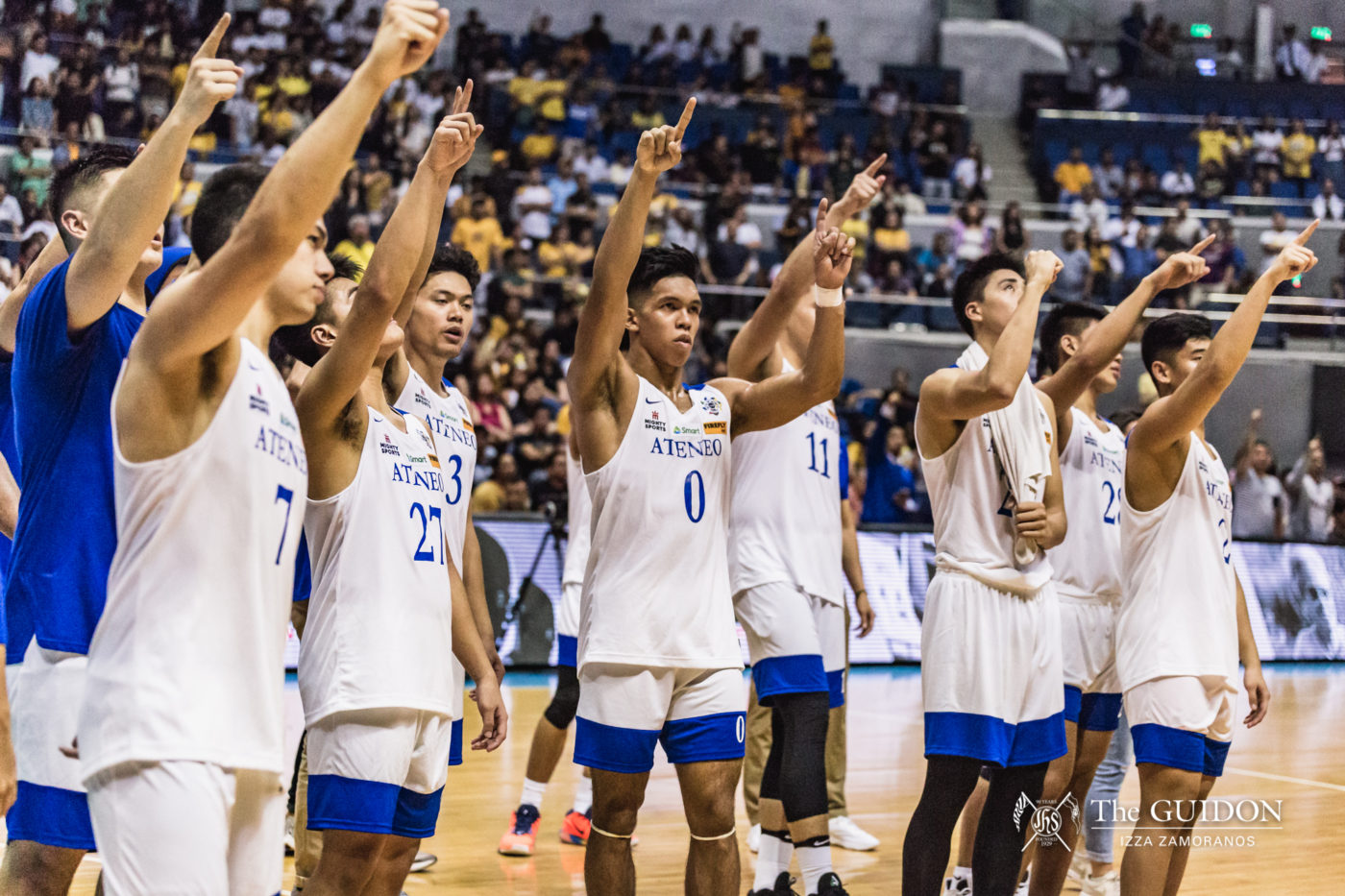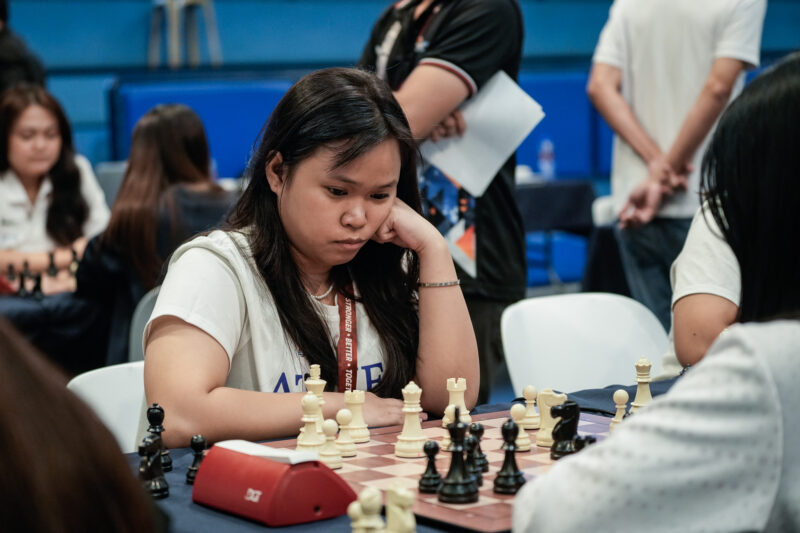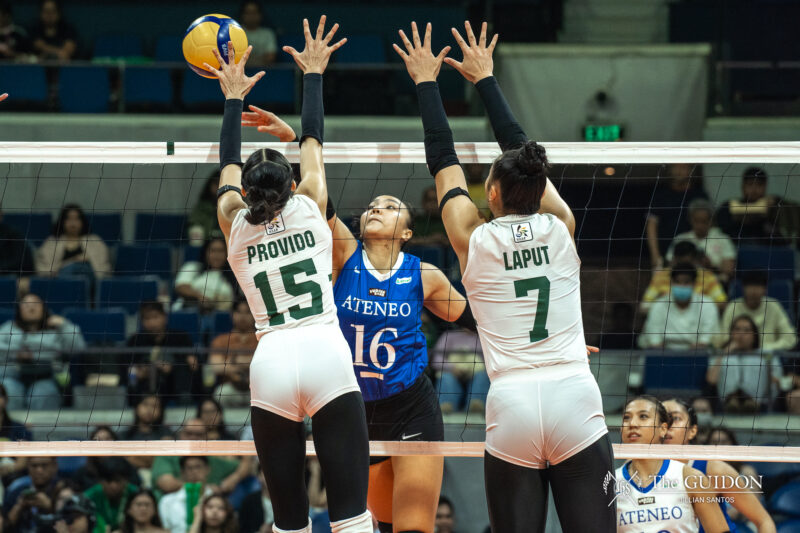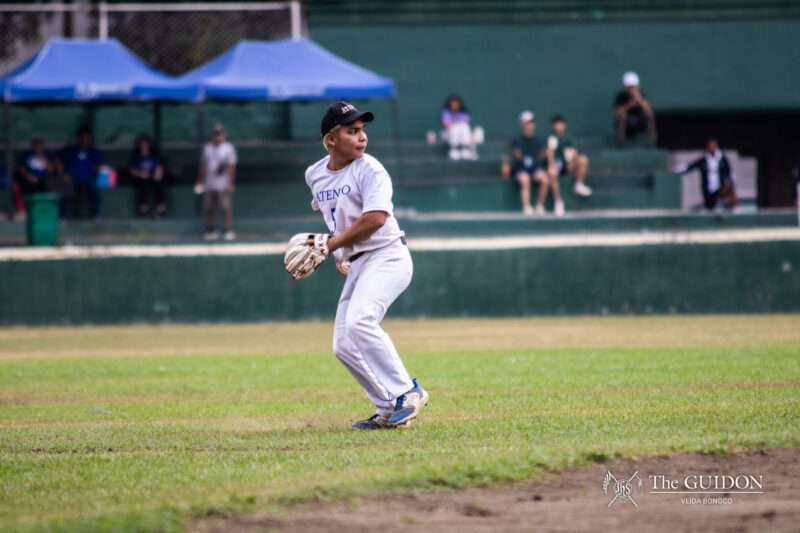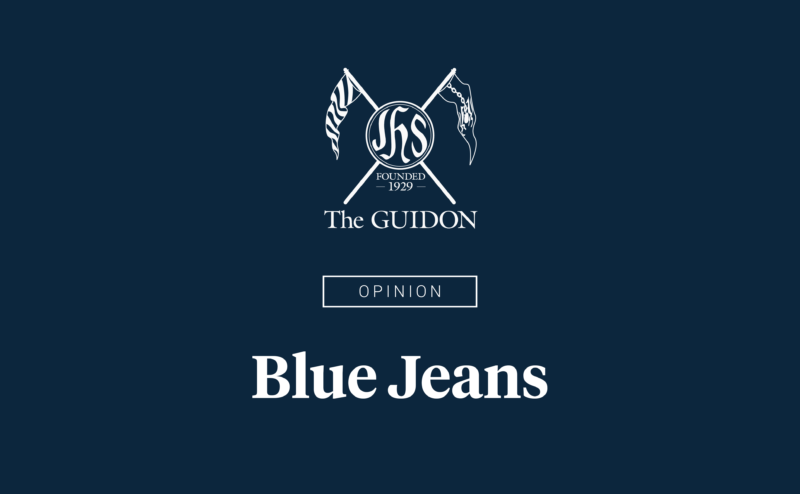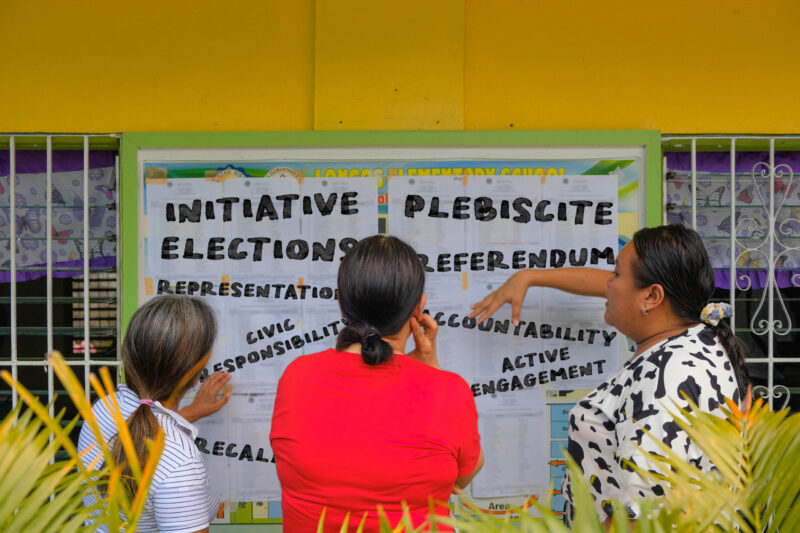In line with the ongoing University Athletic Association of the Philippines (UAAP) Men’s Basketball tournament, this weekly series will analyze the state of the Ateneo Blue Eagles in their quest for the three-peat.
Recap of the week (September 9 to September 15)
The Ateneo Blue Eagles followed their strong opening to UAAP Season 82 with another pair of victories, improving their record to 4-0, which put them at the top of the standings. In their first game of the week, the Blue Eagles eked out a gutsy 71-70 win against the much-improved University of Santo Tomas (UST) Growling Tigers. After a short turnaround, Ateneo pulled out a wire-to-wire 63-46 triumph against the Far Eastern University (FEU) Tamaraws.
This week’s game:
Sunday, September 22, 2:00 PM, vs National University (NU) Bulldogs at the Ynares Center
1. Ateneo’s defense has been shining, but can the offense keep up?

Neal: Defense has been the main catalyst of Ateneo’s four wins this season, as they’ve held their opponents to just 59.3 points per game, which ranks first in the UAAP. Case-in-point: In the game against UST, the Blue Eagles contained the Growling Tigers’ dangerous young trio of Rhenz Abando, Mark Nonoy, and CJ Cansino to a combined 22 points—seven points below their pooled average. The best defensive performance came against FEU when the Blue Eagles held the Tamaraws to just 46 points, which is the lowest scoring output of any team in UAAP Season 82. The Blue and White also did not allow any FEU player to score more than eight points—a prime example of the dominance of their defense.
While the defense has been lights-out so far, the offense hasn’t exactly followed suit. The Blue Eagles have struggled shooting the ball, going from ranking third last season in field goal percentage at 39.8% to just 34.6% this season—dead last in UAAP Season 82. The Blue Eagles have been getting a lot of quality looks as a result of their patience, offensive execution, and ball movement, but the ball simply hasn’t been going in the basket. Thankfully for the Blue Eagles, they had a timely eight-day break to regroup and improve between the game against FEU and their next match against NU.
“[We’ll look] at our offense, [try] to figure out how we can create the highest percentage shots that we can get, and [work] a lot on our shooting,” Head Coach Tab Baldwin explained on what the Blue Eagles’ main focus was on the eight-day rest.
Having the league’s best defense has been paying dividends. It has been the backbone of their four wins this season. But Ateneo needs to start making their shots if they want to inch closer in securing the three-peat. It’s still early in the season and there’s still plenty of time for the Blue Eagles to find the offensive rhythm to match the beat of their defensive groove.
2. Pushing the tempo
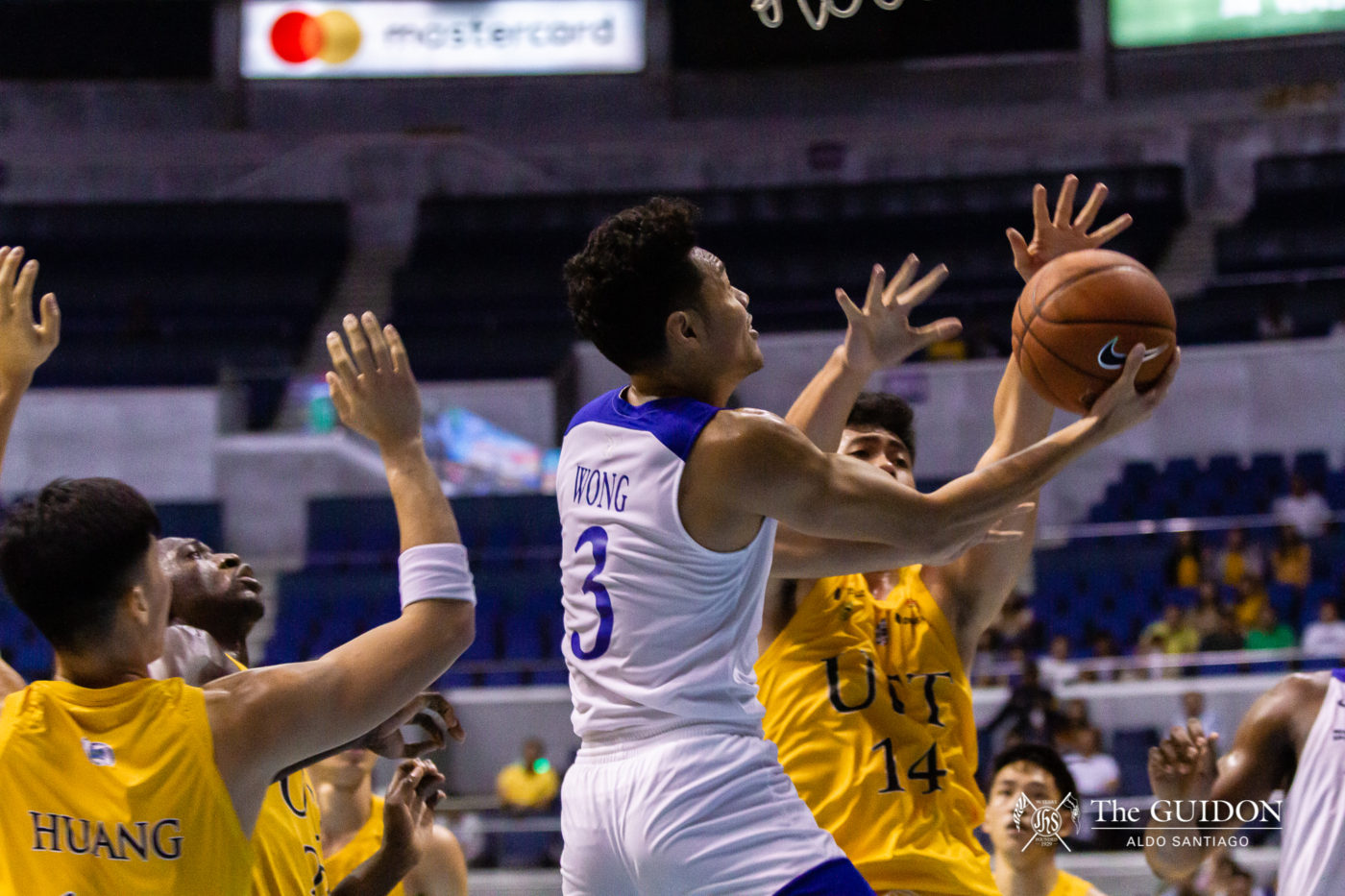
Gio: Head Coach Tab Baldwin’s motion offense has always been predicated by fluid off-ball movement, steady screens, and sharp, active cuts. Although the team has been able to execute their plays in the last two outings, offensive struggles still plague the Blue Eagles. During his most recent post-game press conference, Baldwin stated that his team’s woes on the attack could not be attributed to the quality of the shots taken, but rather to the fact that the ball simply refuses to go in the basket.
This is what makes their offensive struggles not as much of a concern as it seems. Shooting can be remedied through numerous repetitions, making it key for Ateneo to continue to cash in easy buckets generated by their suffocating defense.
It is common basketball knowledge that when fastbreaks are executed correctly, teams usually produce points in bunches with much more ease rather than having to score against an already-set defense. It also allows for second chance opportunities when rebounding bigs are conditioned to run the floor in the event that a player misses his or her fastbreak attempt. For Ateneo, especially given how they have been playing as of late, it is imperative for the team to maintain the fast-paced style they have been implementing in this season. Currently, the Blue Eagles average 12 fastbreak points per outing, sitting closely behind UST and La Salle, both of which tally 12.75 points per match. As for their knack in grabbing second chance points, Ateneo ranks third in the league with 15 points off extra possessions (behind NU’s 15.5 and UST’s 18.6 second chance points). Whenever they are experiencing a scoring drought, a quick bucket has served as a fail-safe for the Blue Eagles to build momentum on.
Running the fastbreak begins by securing defensive rebounds or forcing careless turnovers. Nonetheless, the Blue Eagles have excelled in these aspects as of late. In their first four games, the Blue Eagles have forced teams to cough the ball up by an average of 18 times per contest. This has helped place them in the top-half of the league in points generated off turnovers. During their match against FEU specifically, Ateneo built their lead on a clear 18-0 advantage in points off turnovers.
The Blue Eagles understand that their halfcourt attack has been lackluster, which they remedy by capitalizing on their scrappy defense when nothing is going on for them on the other end. Ateneo has also consistently been out-rebounding teams both offensively and defensively—great measures of hustle and hard-nosed play.
3. Who’s got next?
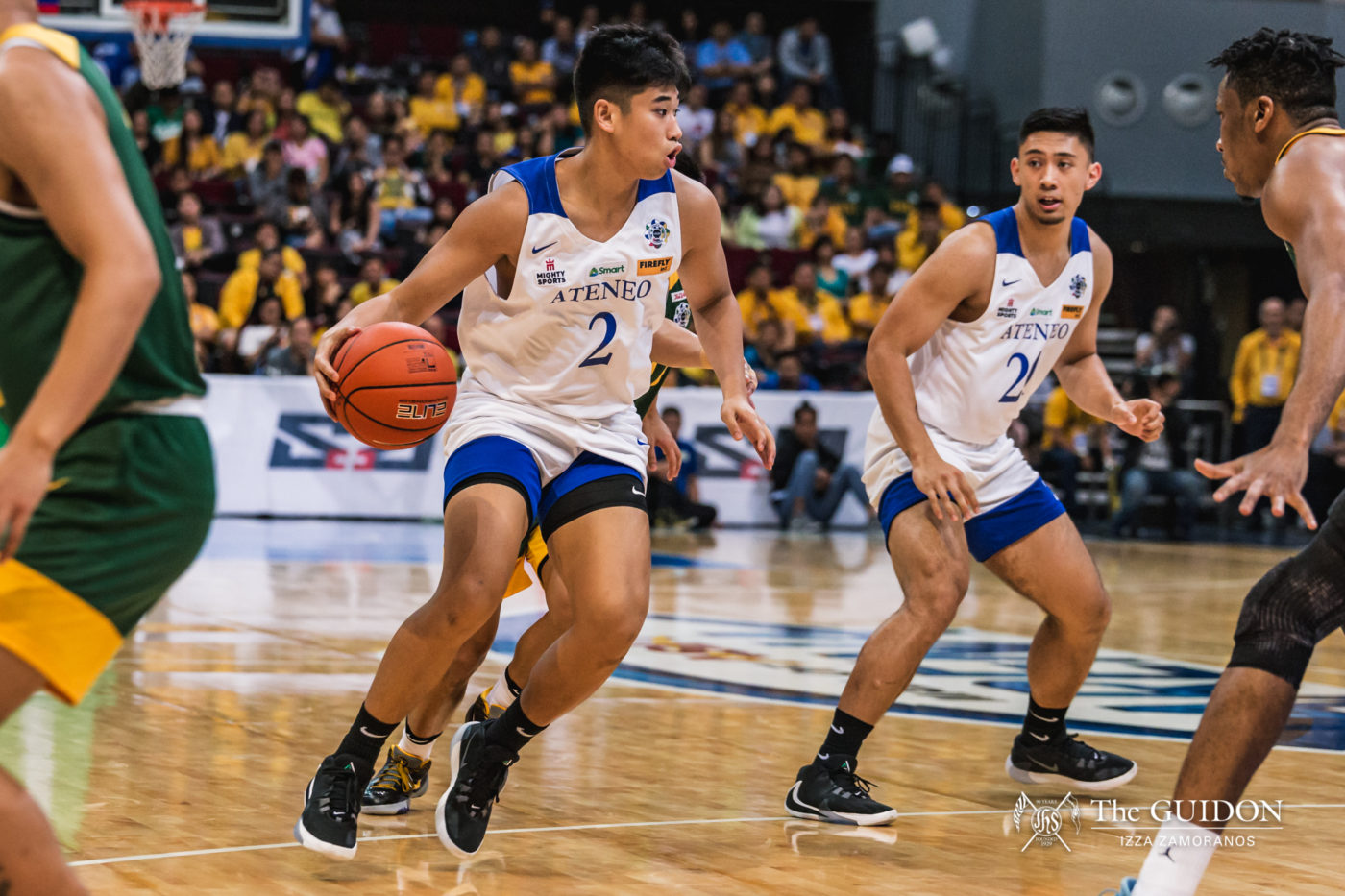
Jaime: Baldwin has used the same starting lineup in three of the Blue Eagles’ first four games. The only reason he deviated from the standard Matt Nieto-Adrian Wong-Thirdy Ravena-Will Navarro-Ange Kouame five in their second game against La Salle was because Wong had an ankle injury. Up to this point, the five have been consistent, combining for 48.0 points per game—good enough for fourth in the league.
However, their second and third units are a different story: They have been shuffled constantly throughout the season. For example, against UST, SJ Belangel came off the bench first to relieve Matt Nieto and Tyler Tio made his first appearance after. Against FEU, it was Tio playing before Belangel. This lack of consistency in their minutes may have contributed to the inconsistent shooting of bench players like Tio, Belangel, and back-up wing BJ Andrade, since they struggle to get warm on the court.
Many coaches run consistent rotations, putting mostly the same players in the game at the same times in all their games. Having a steady rotation could benefit the backups, easing them into the rhythm that would allow them to be warm and ready right when their names are called.
But Baldwin’s erratic rotation may also be a strategic decision, even if it may seem like he’s still tentative with his roster and who to trust. There is certainly some genius behind his gametime unpredictability.
Opposing teams are always on their toes in anticipation of Baldwin’s lineup choices, allowing Ateneo to catch opponents off guard with different strategies for each game. Moreover, Ateneo’s backups are bound to adapt and warm up to the idea of playing with (supposedly) cold legs. It’s clear they’re missing the instant shooting that Jolo Mendoza has given them off the bench these past few years, but as the season goes on, it wouldn’t be a surprise if players like Andrade, Tio, and Belangel light up the scoreboard with their long bombs.
Baldwin’s rotation is the epitome of the “Next Man Up” mentality that the Blue Eagles’ mentor has preached over the past few years. The nature of basketball is unpredictable, as seasons can end in a blink of an eye with a serious injury, and you never fully know what your team may need to win. If anyone on the Eagles were to ever—God forbid—go down with an injury in the Final Four or the Finals, at least the Blue and White can take comfort in knowing that the rest of their soldiers are ready to pick up the slack. If everyone is ready to come in and contribute at a moment’s notice, who knows? Maybe it’s Andrade, Troy Mallillin, or even rookie Jason Credo who will make that pivotal fourth quarter play for the Blue Eagles.

